230 SACD / Wolfgang Amadeus Mozart: Symphonies KV 425 „Linz“, KV 385 „Haffner
Description
It is well-known that musicians very often sit in a circle in TACET's recordings. With this layout, they don't just hear each other, they can also see each other. This means that the musical exchanges between the musicians are simpler and better. And it is easier to achieve a natural-sounding recording, not only in TACET Real Surround Sound but also in stereo.
But is it even possible for an orchestral recording? And without a conductor? We were intrigued by the question and so decided to pursue it.
The answer? It does indeed work - in fact very well! Our video shows that very clearly: https://www.youtube.com/watch?v=-pTFXBzz6WE.
At the very least, a layout like this expresses the equality of all the participants. The Netherlands Chamber Orchestra puts down a spicy performance of two of Mozart's bubbliest symphonies: the "Prague" and the "Linz". A big thank you to the musicians of the NPhO and to Gordan Nikolic who took on this successful venture with great enthusiasm.
8 reviews for 230 SACD / Wolfgang Amadeus Mozart: Symphonies KV 425 „Linz“, KV 385 „Haffner
You must be logged in to post a review.

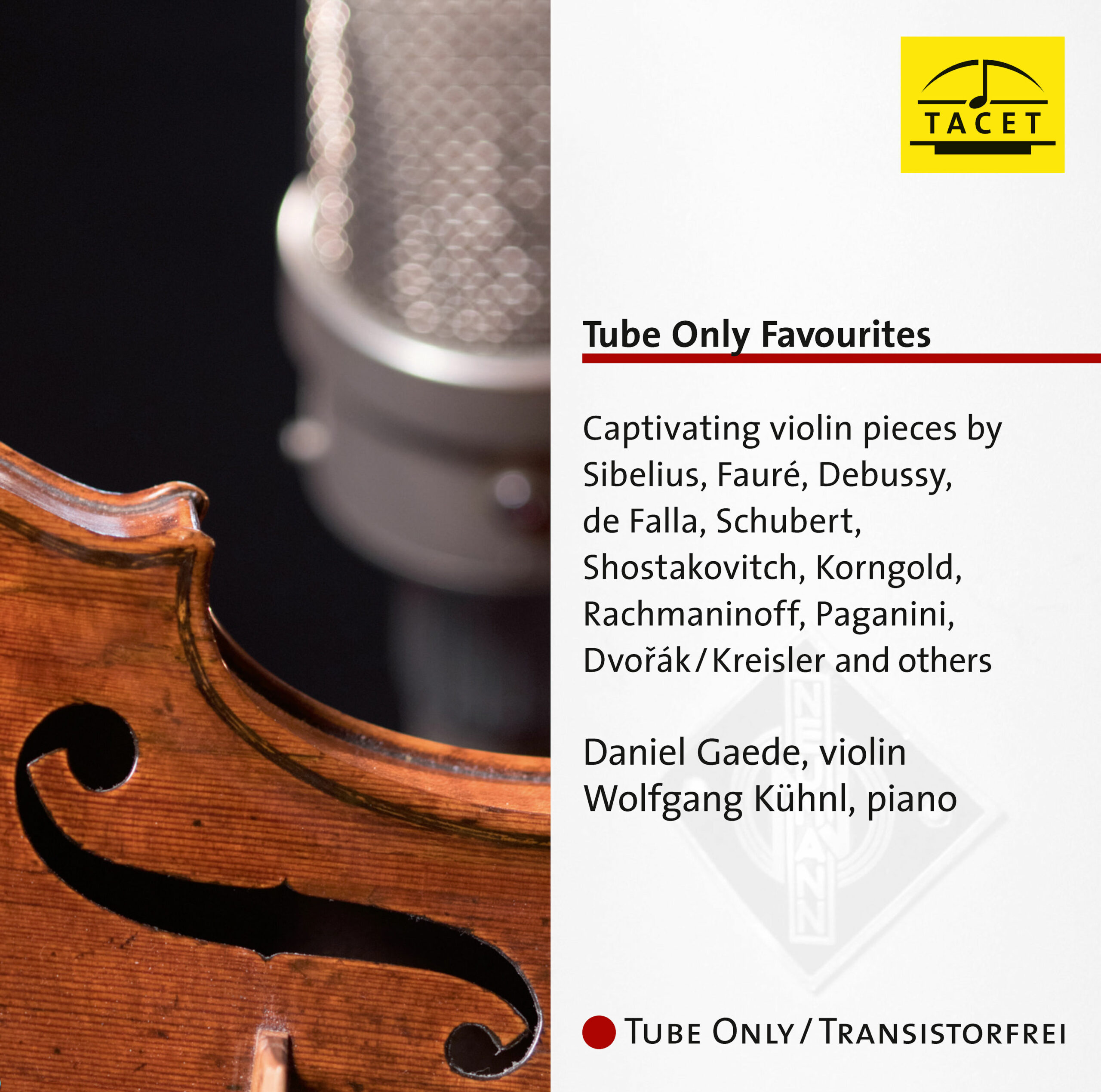
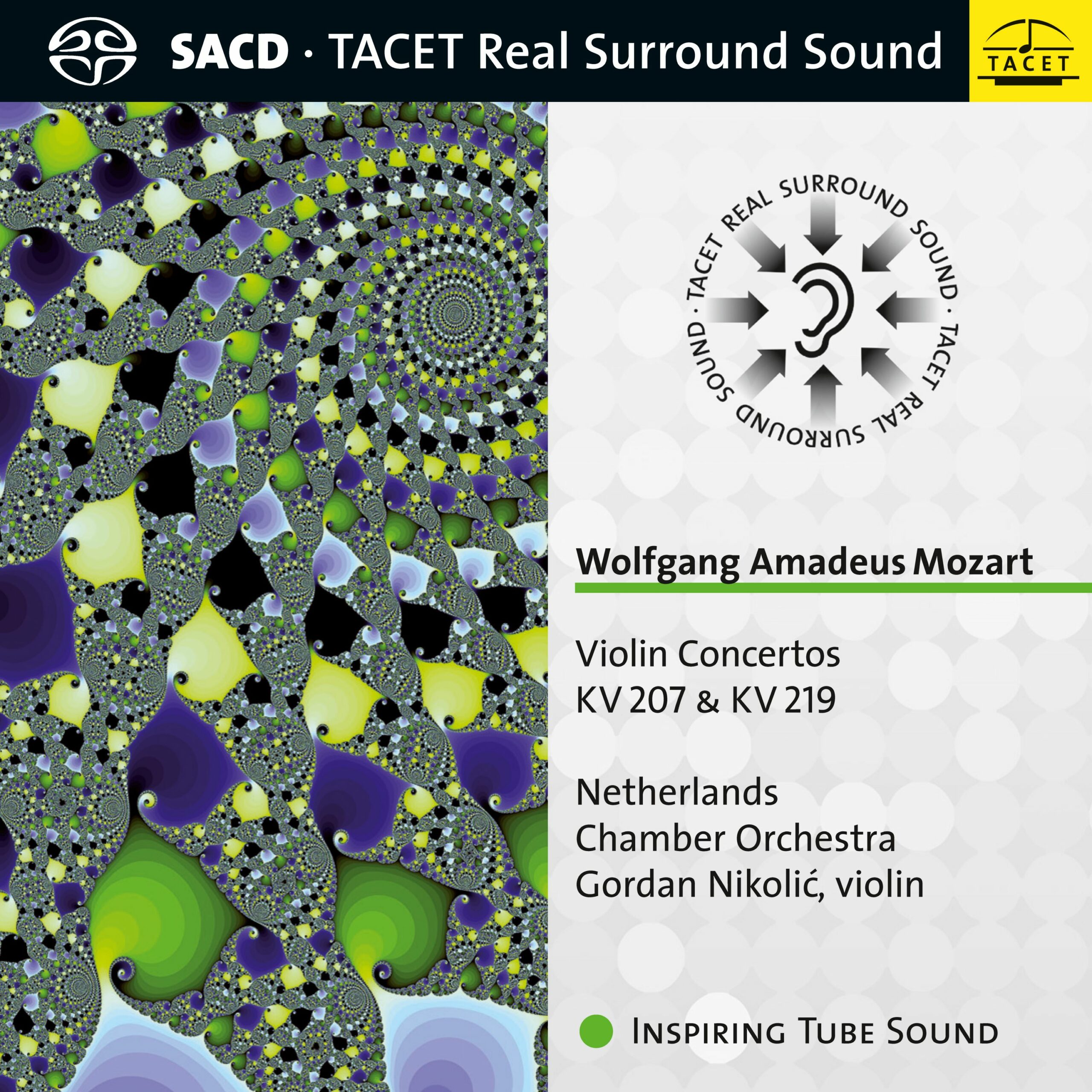
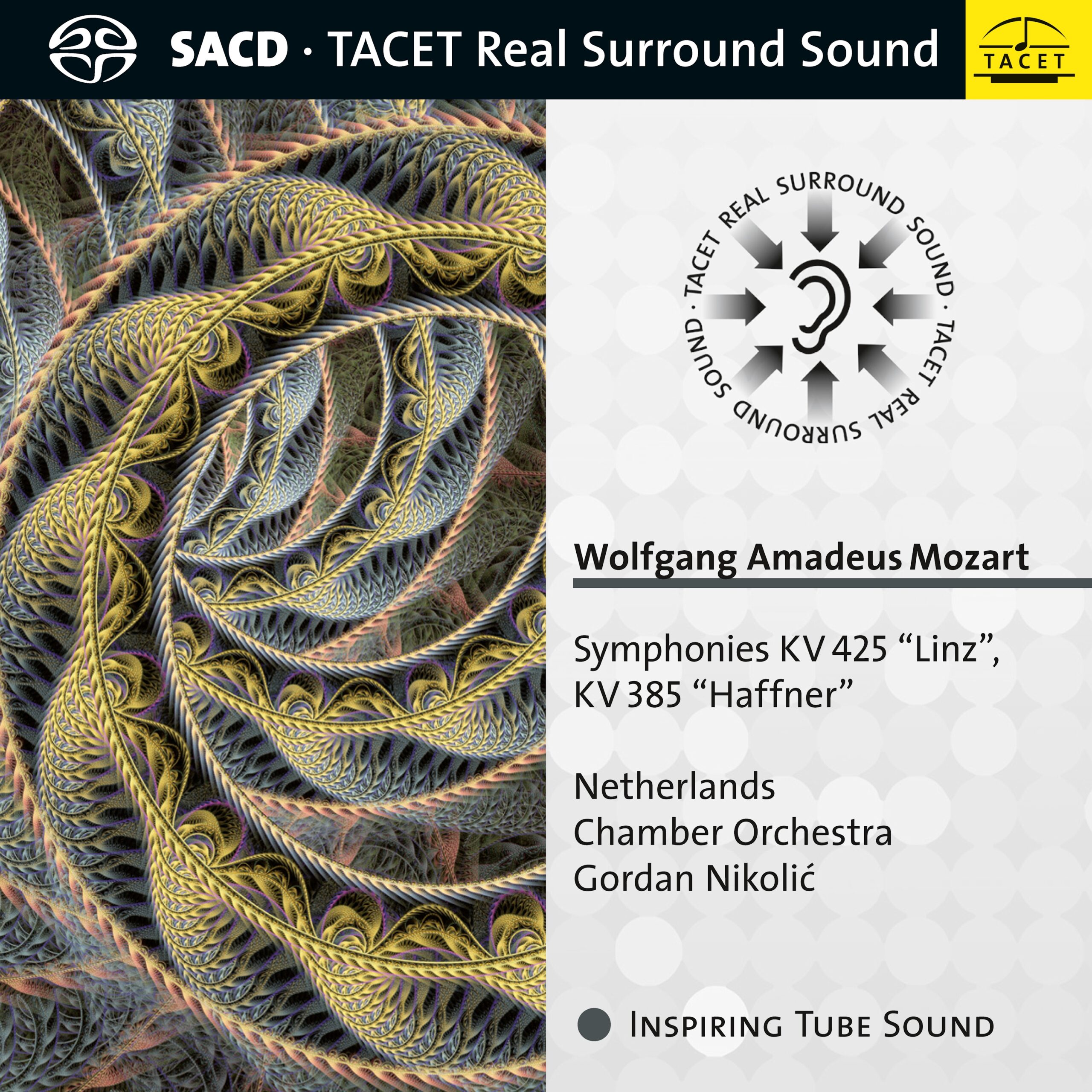
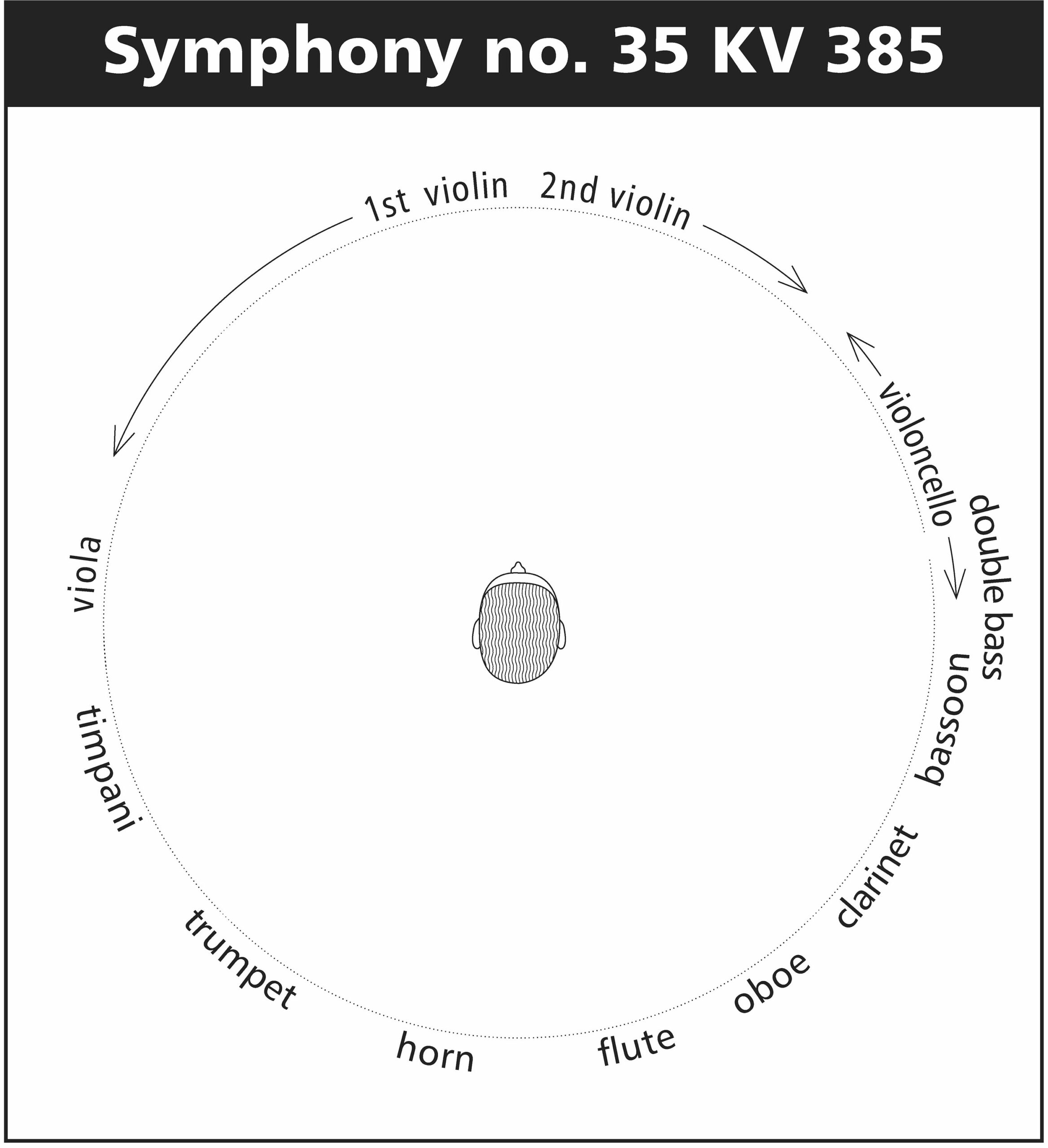
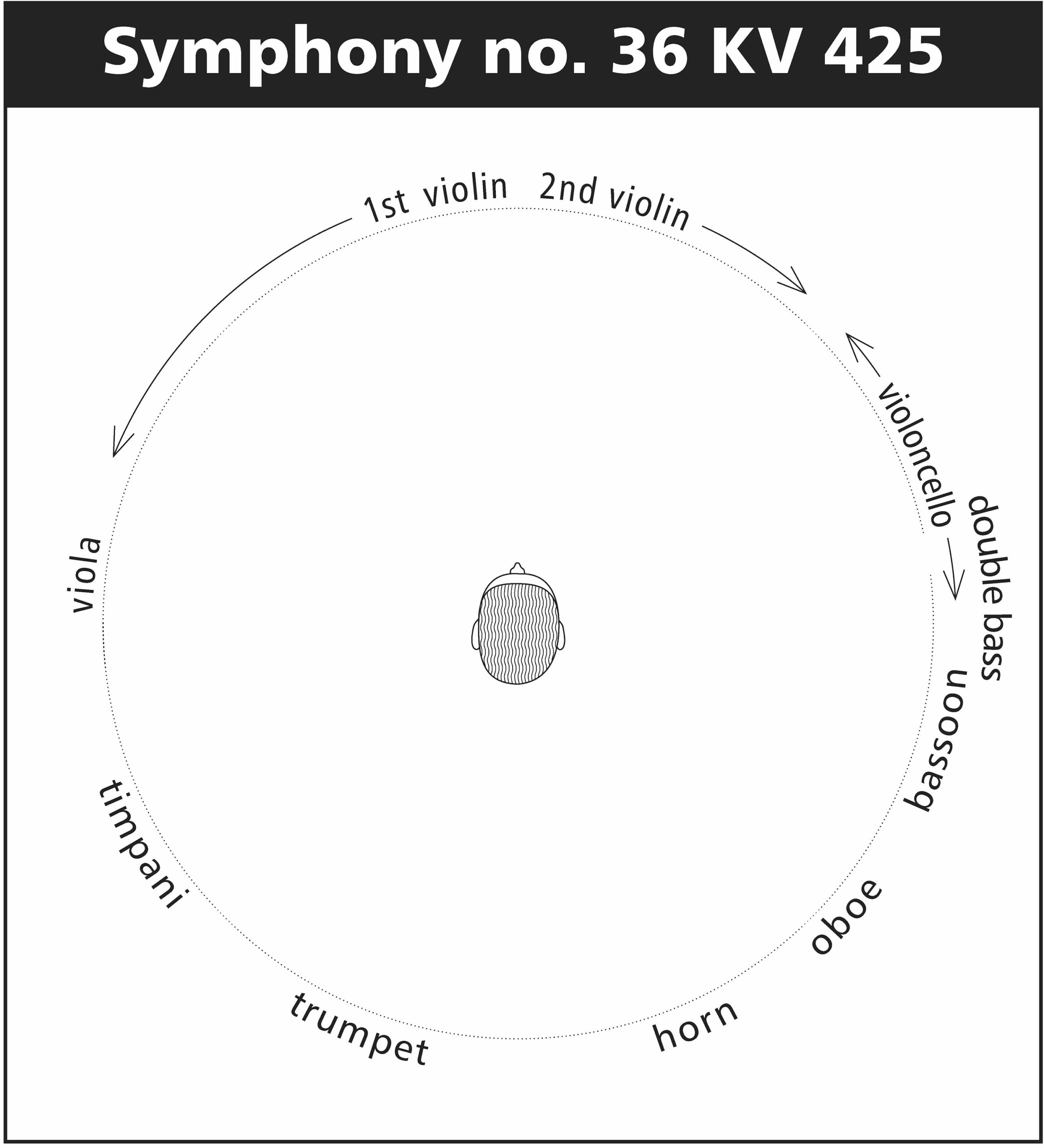
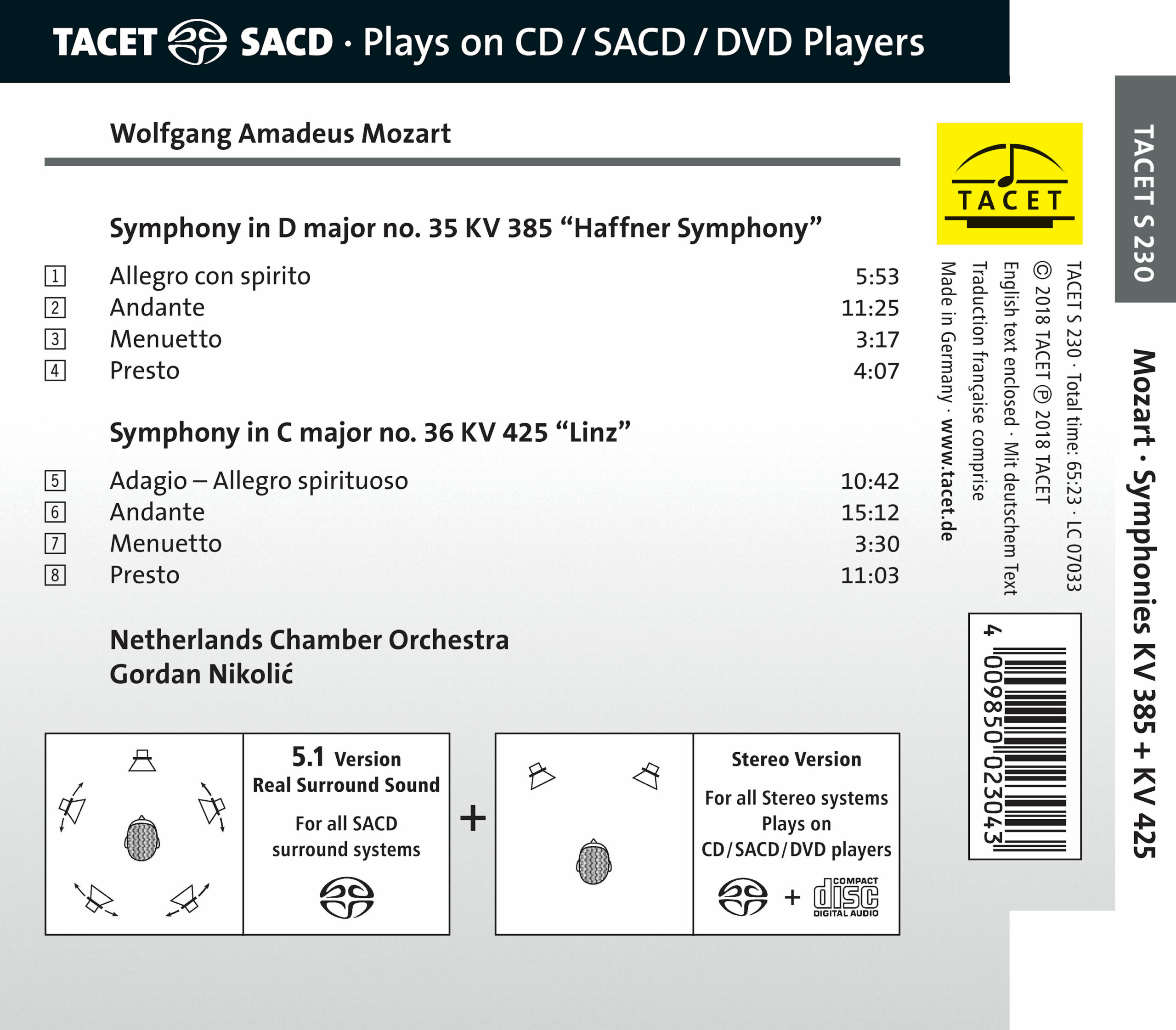
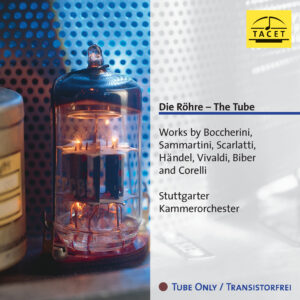
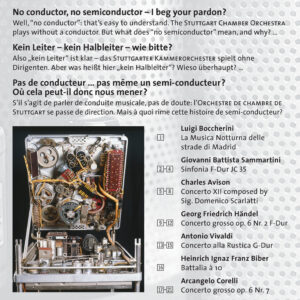
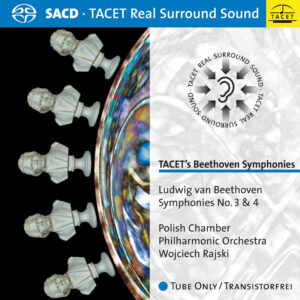
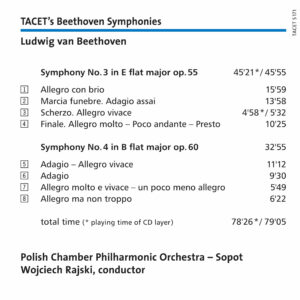
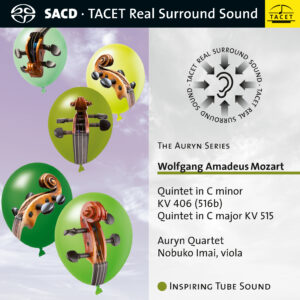
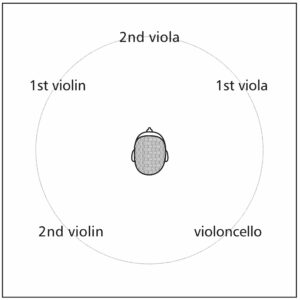

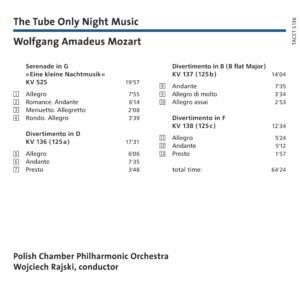
Fanfare Magazin –
-> Originalrezension
Having just finished reviewing Bernhard Paumgartner’s wonderful 1966 recording of Symphony No. 39, I confess that my heart sank a little at the prospect of turning from that “full-fat” version to a vibrato-free chamber orchestra half the size of the Mozarteumorchester. Apart from the differences in scale and interpretative approach, the sonic properties of this issue are very different, too, being a multi-channel SACD “Real Surround Sound” recording, whereby the engineers seek to recreate a concert hall experience by placing the musicians in a circle whose dimensions are proportionate to the number of performers involved, facing the centrally placed microphones. Repeats are observed and the musicians use primarily modern instruments but, in a nod to period style, natural horns and trumpets, plus timpani played with wooden sticks.
I need not have worried; the technological innovation is matched by the musicality of the execution. My understanding is that, although Gordan Nikolić, familiar to UK audiences as the former concertmaster of the London Symphony Orchestra, oversees the project, there is no conductor as such, as the players obviate the need for one by constantly observing each other in the round; it seems to work, as these are crisp, neat, and energised. The slow movements are stately and dignified but do not drag, although the Andante of the “Haffner”, No. 35, in particular is very measured; and if the finale of the “Linz” could be more of a true Presto, it is still sprightly and delicate. The balance among instruments is ideal; it is lovely to hear the woodwind so distinctly. Sometimes the artists’ breathing is caught too acutely by the microphones, and just occasionally I would have liked a modicum of vibrato to help sustain a longer phrase more elegantly, but those are minor cavils. In manner, these performances reminded me of favourite versions by Pater Maag and the Orchestra di Padova e del Veneto on the Arts label, although he does not take the repeats.
These are thoroughly enjoyable recordings in exemplary sound.
Ralph Moore
Classical CD Review –
-> Originalrezension
Here is another winner from TACET - two well-known Mozart symphonies in vivid performances by the superb Netherlands Chamber Orchestra under their conductor Gordan Nikolic. It is another example of the label's approach to multi-channel sound, taking full advantage of available channels to provide a most realistic audio picture with the listener in the middle. As orchestration is slightly different for each symphony, a diagram is provided for each showing specific location for all instruments. If you are interested in true "surround" sound you surely should investigate these TACET releases, most of which have been praised on this site, in particular the Beethoven symphonies. Thanks TACET!!
Robert Benson
MusicWeb international –
-> Originalrezension
(...) These are thoroughly enjoyable recordings in exemplary sound.
Ralph Moore
Audio 11/2018 –
Kreisförmige Sitzordnung, gemeinschaftlicher Spirit: Fürs Label TACET braucht das Netherlands Chamber Orchestra um Konzertmeister Gordan Nikolic keinen Dirigenten als Showman vom Dienst. Klappt das? Und wie! Unglaublich, mit welcher Hochspannung die Niederländer scheinbar abgehörte Mozart-Klassiker zu neuem Leben erwecken. Der Gemeinschaftsgeist des Orchesters und das Mittendrin-Feeling im „TACET Real Surround Sound“ wirken hier auf elektrisierende Art zusammen. Kein reiner Hochglanz-, aber auch kein Leistungssport-Mozart, sondern leidenschaftliches und packendes Musizieren – hauchzart bis prachtvoll, magisch bis explosiv.
Otto Paul Burkhardt, Audio 11/2018
https://www.hraudio.net/ –
-> Originalrezension
A new release coupling of two of Mozart’s most popular symphonies in multi-channel SACD would appear to be unremarkable, even when performed by such a fine body of musicians as the Netherlands Chamber Orchestra directed by their long time musical director Gordan Nikolić. This, however, is no ordinary SACD but one recorded in TACET’s astonishing and, to some, controversial ‘Real Surround Sound’.
TACET’s philosophy is to use the whole acoustic space available in one’s listening room by making full use of the 5 or 5.1 channels usually available on a Blu-ray disc or SACD. Whereas the majority of multi-channel recordings attempt, with varying degrees of success, to create the illusion of a concert hall layout by using the front channels to carry the musical performance and the rears to add the acoustic signature of the venue through extra ambient information, TACET’s approach is crucially different. The musicians sit in a circle (its diameter dependent on the number of performers involved) facing the centre where the microphones are positioned. You can see how this works in practice at https://www.youtube.com/watch?v=-pTFXBzz6WE filmed during rehearsals for this album. https://www.youtube.com/watch?v=-pTFXBzz6 sehen, das wir während der Proben für dieses Album gefilmt haben.
The comprehensive booklet notes that accompany this SACD illustrate the instrumental layouts for each of these symphonies. Careful adjustment of levels and speaker positioning are needed to realise accurately engineer Andreas Spreer's visual representations and success will, of necessity, be determined by one's own system and domestic surroundings. The rewards are well worth the effort as one hears these familiar works as if with fresh ears. Both symphonies were recorded in the most agreeable acoustic of the NedPho-Koepel (the former Majellakerk), Obiplein, Amsterdam in February 2017.
Of course none of this technological wizardry would matter without the correspondingly high musical values evident in these performances. Gordan Nikolić is probably most familiar to UK audiences as an outstanding concertmaster of the London Symphony Orchestra but also for his many recordings as both a conductor and soloist for a variety of record labels. His performances of both the ‘Haffner Symphony’ and the ‘Linz’ are crisp, polished and evenly paced, the only possible exception being the slow movement of the ‘Haffner’ which though lovingly phrased seems to me a tad too measured, especially with the repeat included as here. The Netherlands Chamber Orchestra perform on modern instruments but with the use of natural horns and trumpets and timpani played with wooden sticks – a nod to so-called “period style”. Though some will regret the absence of hell-for-leather tempi and vibratoless string playing, these eloquent performances capture both the festive nature and grandeur of these masterpieces in a way that will give much pleasure to many, whether listening in 2-channel Stereo or 5.1 Real Surround Sound.
Seine Aufführungen sowohl der „Haffner-Symphonie“ als auch der „Linz“ sind knackig, geschliffen und im gleichmäßigen Tempo, die einzig mögliche Ausnahme ist der langsame Satz der „Haffner“, der mir, obwohl liebevoll formuliert, etwas zu maßvoll vorkommt, insbesondere mit dem Wiederholung wie hier enthalten. Das Niederländische Kammerorchester spielt auf modernen Instrumenten, verwendet jedoch Naturhörner und Trompeten sowie Pauken, die mit Holzstöcken gespielt werden – eine Anspielung auf den sogenannten „Zeitstil“. Auch wenn einige das Fehlen verdammter Tempi und vibratoloser Streicherspiele bedauern werden, fangen diese beredten Darbietungen sowohl den festlichen Charakter als auch die Erhabenheit dieser Meisterwerke auf eine Weise ein, die vielen viel Freude bereiten wird, egal ob sie in 2-Kanal-Stereo zuhören oder 5.1 Echter Surround-Sound.
Highly recommended.
Graham Williams
Classical CD Choice –
-> Originalrezension
Klassik-CD-Choice-CD des Monats
When the Tacet label extols the virtues of its “true surround sound,” it speaks nothing less than the absolute truth. The company's policy of placing the listener absolutely at the center of every musical experience - in other words, using all available channels of the SACD medium for more than just atmosphere and placing the instruments both behind and in front of the listener - was temporary controversial one, but the impressive results speak for themselves. For those with the appropriate equipment (and of course this includes classical listeners with a preference for the richest and most comprehensive reproduction of sound values), the Tacet discs are a truly exhilarating listening experience. That's the case in these pointed and athletic performances of two of Mozart's most popular symphonies. Part of the success of the Tacet label is the fact that with this particular recording method, every strand of the orchestration can be heard with complete clarity - and this Mozart disc is the perfect calling card.
Barry Forshaw
Literatur Spiegel –
--> original review
Surprisingly clear-cut and with a wonderfully warm sound...
Johannes Saltzwedel
Pizzicato –
--> original review
Mozart's Haffner Symphony and the Linz Symphony in the so-called Real Surround, which means that a surround system lets the violins play at the front, but the wind instruments and timpani play at the side or back. This description may seem more artificial than the sound actually is, because “sitting in the middle” is already exciting and gives a pleasant listening experience.
But let's get to the music. The opening Allegro con spirito of the Haffner Symphony has drama and agile lightness. And the last two movements are pleasantly agile and lively. But the highlight is the graceful, cantabile, lovingly chiselled and extremely warm-hearted second movement
The Adagio introduction to the Linz Symphony is exciting, with its fast parts sounding flexible, springy and clear.
The 'Netherlands Chamber Orchestra', which always reacts spontaneously, stands out in its music-making due to its natural articulation, and actually due to the unobtrusiveness of the music flow, which in turn gives us beautiful moments in the slow movement.
Remy Franck